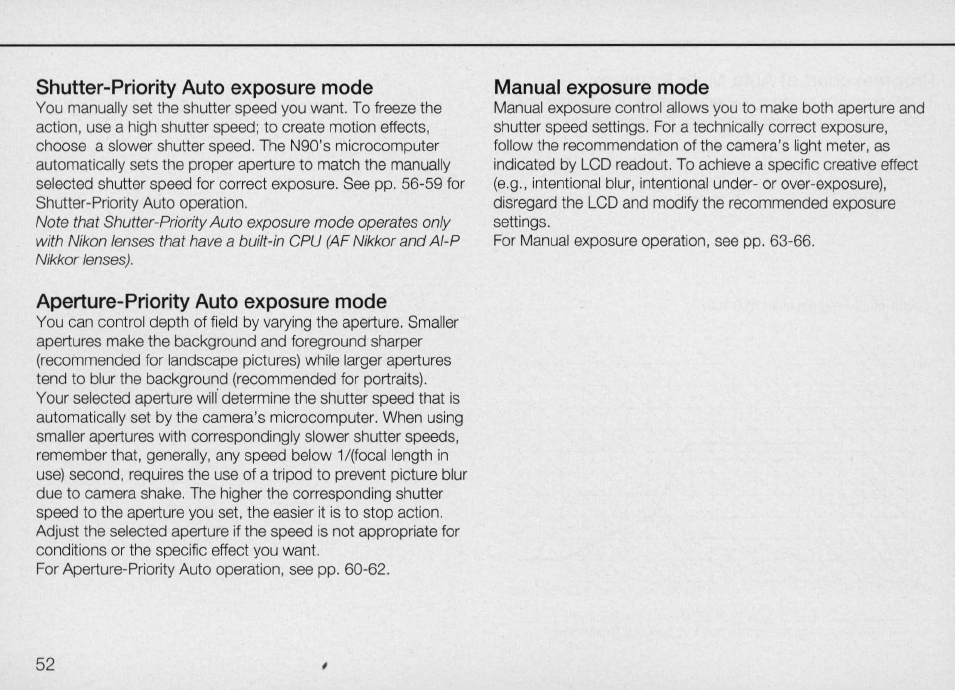
Shutter-Priority Auto exposure mode
You manually set the shutter speed you want. To freeze the
action, use a high shutter speed; to create motion effects,
choose a slower shutter speed. The N90's microcomputer
automatically sets the proper aperture to match the manually
selected shutter speed for correct exposure. See pp. 56-59 for
Shutter-Priority Auto operation.
Note that Shutter-Priority
Auto
exposure
mode
operates only
with Nikon
lenses that have a built-in
CPU
(AF Nikkor
and
AI-P
Nikkor lenses).
Aperture-Priority Auto exposure mode
Yo
u can control depth of field by varying the aperture. Smaller
apertures make the background and foreground sharper
(recommended for landscape pictures) while larger apertures
tend to blur the background (recommended for portraits).
Your selected aperture
wi
l
l'
determine the shutter speed that
is
automatica
ll
y set by the camera's microcomputer. When using
smaller apertures with correspondingly slower shutter speeds,
remember that, generally, any speed bel
ow
1/(focal length
in
use)
second, requires the use
of
a tripod to prevent picture blur
due to camera shake. The higher the corresponding shutter
speed to the aperture you set, the easier it is to stop action.
Adjust the selected aperture if the speed
is
not appropriate for
conditions or the specific effect you want.
For Aperture-Priority Auto operation, see pp. 60-62.
52
Manual exposure mode
Manual exposure control allows you to make both aperture and
shutter speed settings. For a technically correct exposure,
follow the recommendation of the camera's light meter, as
indicated by LCD readout. To achieve a specific creative effect
(e.g., intentional blur, intentional under- or over-exposure),
disregard the LCD and modify the recommended exposure
settings.
For Manual exposure operation, see pp. 63-66.


















